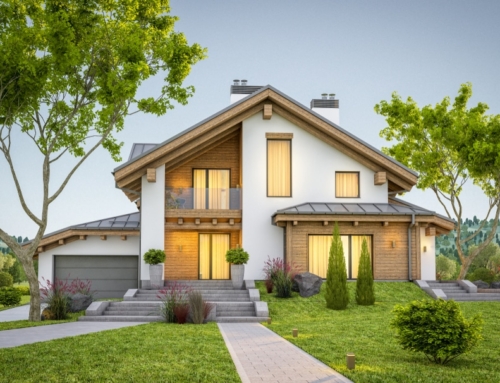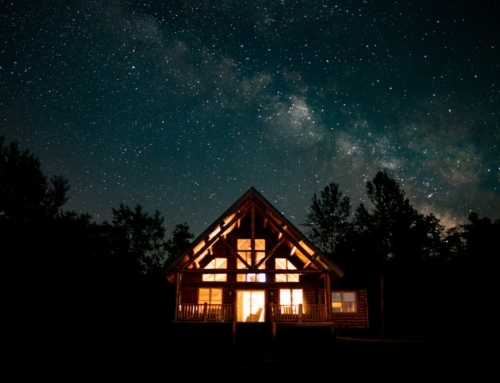In the 30 years he worked for an insurance company, Bill McCay was transferred seven times. The company always bought his home and he always purchased a new house in his new location.
In the 1960s, McCay was transferred to Atlanta. He saw an ad for a subdivision in Decalb County. The model he chose was a 3-bedroom ranch. It also happened to be a manufactured house, which was built in a factory and arrived on three trucks.
“I picked out the lot that day, and in less than six weeks we moved in. The house came complete from the factory on three trucks. It was put together in four days. The rest of the time was used to complete the walk-in basement and the brick exterior,” McCay said.
He has nothing but praise for that house. “What a wonderful home. It had low heating and air conditioning costs. Every wall and ceiling was insulated between the metal studs. When I moved back to Atlanta last year, I visited the folks that now live there. They enjoy it too. And, it still looks new!”
Manufactured homes have been around for a long time. Prior to the mid-1970s, they were referred to as mobile homes, which were single-wide trailers on wheels. McCay’s home was actually an early version of today’s modular homes, which can be two stories high and look exactly like a “stick-built” home.
More than 80 percent of residents who live in manufactured or modular homes rate their satisfaction with the product as “high,” according a study released last year by Virginia Tech professors Julia Beamish and Rosemary Goss.
But the best part about manufactured housing is the price. The average cost of new construction today exceeds $70 per square foot, according to figures from the National Association of Home Builders. A manufactured or modular home can be completed for about half as much, or $35 to $40 per square foot, according to the Manufactured Housing Institute.
On a 1,000 square foot home, the savings could be as much as $35,000 to $40,000. That kind of savings goes a long way toward making homeownership affordable for Americans who earn just 50 percent of the median area income.
Beamish and Goss say manufactured homes (which until 1975 were known as Mobile Homes, and in the 1950s were known as house trailers) are simply factory-built housing constructed and manufactured to be in compliance with construction and safety standards set by the U.S. Department of Housing and Urban Development.
“You’ll know it’s a manufactured home if it’s built on a permanent chassis in an assembly-line factory, is pulled to the site by a truck cab, does not have to be placed on a foundation (though it can be put on a slab) and its placement is restricted by zoning,” says Goss.
Cathy Davidson, vice president of sales for Tristar Estates, in Bourbonnais, Illinois, says her subdivision is zoned for up to 900 manufactured homes. The lot sizes are a minimum of 100′ x 50′, and some are larger.
“My residents are moving here from the Chicago metropolitan area because they don’t like what’s happening to their neighborhoods. They want to spend up to $110,000 and they end up buying in our community because they can get so much more for their money,” Davidson explains.
“If they bought new construction in Bourbonnais, they’d get a little 800-square foot crackerbox house with 2 or 3 bedrooms and a one-car garage. Or, if they buy an existing home, it needs so much work and they don’t want to do the work. Here, they get 1,800 square feet, a 2-car attached garage, 2’x 6′ construction, and thermopane windows,” she adds.
Beamish and Goss say more than 19 million people, just about 8 percent of the U.S. population, live in manufactured homes, but they are far more popular in rural America than in metropolitan areas.
Most families purchase multi-section or double-wide homes, which cost an average of about $46,000. That’s about a third of the national average cost of an existing home and less than a quarter of the average cost of newly constructed “stick-built” home.
That makes manufactured housing a “highly affordable alternative” to both site-built single-family homes and to apartments, say Beamish and Goss. So why aren’t more families living in manufactured homes? Zoning restrictions, land costs, and public attitude.
Strong labor unions prefer to have their members build homes one at a time, rather than on an assembly line in a factory. They pressure city councils to restrict or deny permits for manufactured housing developments, say supporters of the manufactured housing industry.
And then there is the public’s perception of manufactured housing, say Beamish and Goss.
In their study, they found that local residents worried about the quality of construction and what would happen when manufactured homes deteriorated. They also worried about their appearance, the impact on their property values, the safety of the units (particularly in tornado-prone areas), and whether subdivisions or “trailer parks” would be maintained. They also projected that most of the residents would be on public assistance.
But as is often the case, and is the case at Tristar Estates in Bourbonnais, Illinois, the residents of a manufactured housing subdivision turn out to look much like the rest of America.
Beamish and Goss found that the residents of double-wide homes typically put them on permanent foundations, owned the home and land, and were mostly small, two-parent families who worked full-time. More than half had had some college education and 27 percent earned income over $45,000 per year.
Manufactured housing could be an affordable housing alternative. It would allow more Americans to own their own piece of the American Dream. But first, there are a few issues to deal with, says Beamish.
“We need acceptance by community leaders and design guidelines that will reassure everyone that they won’t have something ugly in their backyard,” she says, adding “And there’s a prejudice against low-income people and an image of older housing stock that we have to overcome before we get there.”






Leave A Comment